 Hydrogen Bonding and Transfer in the Excited State, Volume I & II By
Hydrogen Bonding and Transfer in the Excited State, Volume I & II By2010 | 948 Pages | ISBN: 0470666773 | PDF | 60 MB
This book gives an extensive description of the state-of-the-art in research on excited-state hydrogen bonding and hydrogen transfer in recent years. Initial chapters present both the experimental and theoretical investigations on the excited-state hydrogen bonding structures and dynamics of many organic and biological chromophores. Following this, several chapters describe the influences of the excited-state hydrogen bonding on various photophysical processes and photochemical reactions, for example: hydrogen bonding effects on fluorescence emission behaviors and photoisomerization; the role of hydrogen bonding in photosynthetic water splitting; photoinduced electron transfer and solvation dynamics in room temperature ionic liquids; and hydrogen bonding barrier crossing dynamics at bio-mimicking surfaces. Finally, the book examines experimental and theoretical studies on the nature and control of excited-state hydrogen transfer in various systems. Hydrogen Bonding and Transfer in the Excited State is an essential overview of this increasingly important field of study, surveying the entire field over 2 volumes, 40 chapters and 1200 pages. It will find a place on the bookshelves of researchers in photochemistry, photobiology, photophysics, physical chemistry and chemical physics.Content: Chapter 1 Vibrational Dynamics of the Double Hydrogen Bonds in Nucleic Acid Base Pairs (pages 1-27): Yun?an Yan and Oliver KuhnChapter 2 Vibrational Energy Relaxation Dynamics of XH Stretching Vibrations of Aromatic Molecules in the Electronic Excited State (pages 29-38): Takayuki EbataChapter 3 Hydrogen Bond Basicity in the Excited State: Concept and Applications (pages 39-78): Attila DemeterChapter 4 Solute-Solvent Hydrogen Bond Formation in the Excited State. Experimental and Theoretical Evidence (pages 79-123): Iulia Matei, Sorana Ionescu and Mihaela HillebrandChapter 5 Electronic?Excited?State Structures and Properties of Hydrated DNA Bases and Base Pairs (pages 125-147): Manoj K. Shukla and Jerzy LeszczynskiChapter 6 Insight from Singlet into Triplet Excited?State Hydrogen Bonding Dynamics in Solution (pages 149-158): Guang?Jiu Zhao and Ke?Li HanChapter 7 Probing Dynamic Heterogeneity in Nanoconfined Systems: The Femtosecond Excitation Wavelength Dependence and Fluorescence Correlation Spectroscopy (pages 159-174): Shantanu Dey, Ujjwal Mandal, Aniruddha Adhikari, Subhadip Ghosh and Kankan BhattacharyyaChapter 8 Fluorescence Studies of the Hydrogen Bonding of Excited?State Molecules within Supramolecular Host-Guest Inclusion Complexes (pages 175-191): Brian D. WagnerChapter 9 Hydrogen Bonding on Photoexcitation (pages 193-204): Debarati Dey, Manas Kumar Sarangi and Samita BasuChapter 10 Effect of Intramolecular H?Bond?Type Interactions on the Photochemistry of Aza?Stilbene?Like Molecules (pages 205-215): Giampiero Bartocci, Ugo Mazzucato and Anna SpallettiChapter 11 Hydrogen Bonding Barrier?Crossing Dynamics at Biomimicking Surfaces (pages 217-267): Rajib Kumar Mitra, Pramod Kumar Verma, Debapriya Banerjee and Samir Kumar PalChapter 12 Intermolecular Hydrogen Bonding in the Fluorescence Excited State of Organic Luminophores Containing Both Carbonyl and Amino Groups (pages 269-285): Ilijana Timcheva and Peter NikolovChapter 13 Hydrogen?Bonding Effects on Excited States of Para?Hydroxyphenacyl Compounds (pages 287-311): David Lee PhillipsChapter 14 Hydrogen?Bonding Effects on Intramolecular Charge Transfer (pages 313-329): Govindarajan KrishnamoorthyChapter 15 Chemical Dynamics in Room?Temperature Ionic Liquids: The Role of Hydrogen Bonding (pages 331-340): Souravi Sarkar, Rajib Pramanik and Nilmoni SarkarChapter 16 Vibrational Spectroscopy for Studying Hydrogen Bonding in Imidazolium Ionic Liquids and their Mixtures with Cosolvents (pages 341-352): Johannes KieferChapter 17 Intramolecular H?Bond Formation Mediated De?Excitation of Curcuminoids: A Time?Resolved Fluorescence Study (pages 353-375): Luca Nardo, Alessandra Andreoni and Hanne Hjorth TonnesenChapter 18 Hydrogen Bonds of Protein?Bound Water Molecules in Rhodopsins (pages 377-391): Hideki KandoriChapter 19 Ground? and Excited?State Hydrogen Bonding in the Diazaromatic Betacarboline Derivatives (pages 393-417): Carmen Carmona, Manuel Balon, Maria Asuncion Munoz, Antonio Sanchez?Coronilla, Jose Hidalgo and Emilio Garcia?FernandezChapter 20 Effect of H?Bonding on the Photophysical Behaviour of Coumarin Dyes (pages 419-431): Sukhendu Nath, Manoj Kumbhakar and Haridas PalChapter 21 Role of Hydrogen Bonds in Photosynthetic Water Splitting (pages 433-461): Gernot RengerChapter 22 Proton Transfer Reactions in the Excited Electronic State (pages 463-523): Vladimir I. TominChapter 23 Controlling Excited?State H?Atom Transfer along Hydrogen?Bonded Wires (pages 525-554): Carine Tanner Manca, Christian Tanner and Samuel LeutwylerChapter 24 Excited?State Proton Transfer via Hydrogen?Bonded Dimers and Complexes in Condensed Phase (pages 555-578): Cheng?Chih Hsieh, Chang?Ming Jiang and Pi?Tai ChouChapter 25 QM/MM Study of Excited?State Solvation Dynamics of Biomolecules (pages 579-588): Tetsuya Taketsugu, Daisuke Kina, Akira Nakayama, Takeshi Noro and Mark S. GordonChapter 26 Excited?State Intramolecular Proton Transfer Processes on Some Isomeric Naphthalene Derivatives: A Density Functional Theory Based Computational Study (pages 589-608): Sankar Prasad De and Ajay MisraChapter 27 Conformational Switching Between Acids and their Anions by Hydrogen Bonding (pages 609-626): Taka?Aki Okamura, Hitoshi Yamamoto and Norikazu UeyamaChapter 28 Charge Transfer in Excited States: ab initio Molecular Dynamics Simulations (pages 627-639): Maciej Kolaski, Anupriya Kumar, Han Myoung Lee and Kwang S. KimChapter 29 Competitive ESIPT in o?Hydroxy Carbonyl Compounds: Perturbation through Solvent Modulation and Internal Torsion (pages 641-660): Sivaprasad MitraChapter 30 Excited?State Double Hydrogen Bonding Induced by Charge Transfer in Isomeric Bifunctional Azaaromatic Compounds (pages 661-709): Dolores Reyman and Cristina Diaz?OlivaChapter 31 Hydrogen?Bonded Large Molecular Aggregates of Charged Amphiphiles and Unusual Rheology: Photochemistry and Photophysics of Hydroxyaromatic Dopants (pages 711-745): Moazzam Ali and Swapan K. SahaChapter 32 Excited?State Intramolecular Proton Transfer in 2?(2??Hydroxyphenyl)benzoxazole Derivatives (pages 747-760): Yi Pang and Weihua ChenChapter 33 Ultrafast Dynamics of the Excited States of Hydrogen?Bonded Complexes and Solvation (pages 761-795): Dipak K. PalitChapter 34 Volume Changes Associated with Solute-Solvent Reorganization Following Photoinduced Proton Transfer in Aqueous Solutions of 6?Methoxyquinoline (pages 797-803): Stefania Abbruzzetti and Cristiano ViappianiChapter 35 Molecular Recognition and Chemical Sensing of Anions Utilizing Excited?State Hydrogen?Bonding Interaction (pages 805-814): Ashutosh S. Singh and Shih?Sheng SunChapter 36 Theoretical Studies of Green and Red Fluorescent Proteins (pages 815-837): Hong Zhang, Qiao Sun, Sufan Wang, Seth Olsen and Sean C. SmithChapter 37 Changes in Active Site Hydrogen Bonding upon Formation of the Electronically Excited State of Photoactive Yellow Protein (pages 839-855): Wouter D. Hoff, Zhouyang Kang, Masato Kumauchi and Aihua XieChapter 38 Excited State Dynamics in the Light?Driven Enzyme Protochlorophyllide Oxidoreductase (POR) (pages 857-864): Marie Louise Groot and Derren James HeyesChapter 39 Photodissociation of Molecules in Pure and Doped Water and in Nitrogen Heterocyclic Clusters in the Excited State (pages 865-891): Michal Farnik, Petr Slavicek and Udo Buck
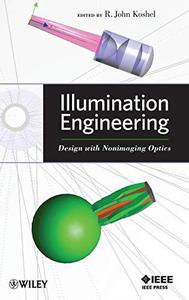


![S.T.A.L.K.E.R. 2 / STALKER 2: Heart of Chornobyl - Ultimate Edition (2024) [+UPDATE 23.12.2024 - v1.1.3] ElAmigos / Polska wersja językowa](https://i.postimg.cc/Zqd8RWGY/UZG8PBE.jpg)



































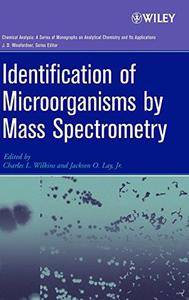

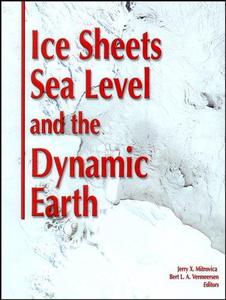

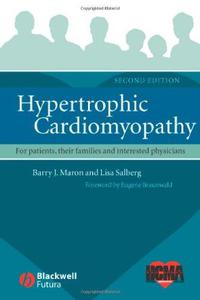
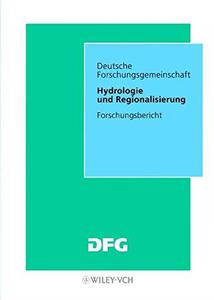

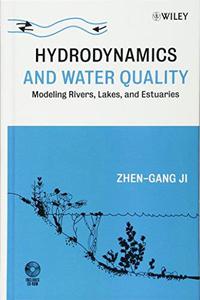
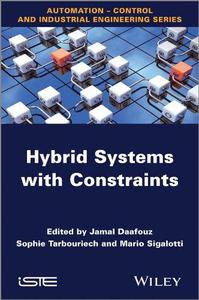







![David Gilmour - Luck and Strange (2024) [FLAC]](https://i.imgur.com/everaBc.jpeg)
![Męskie Granie Orkiestra - Męskie Granie 2024 (2024) [FLAC]](https://i.imgur.com/FAyOxrM.jpeg)
![The Rolling Stones - Hackney Diamonds (2023) [FLAC]](https://i.imgur.com/wCkyyUN.jpg)
![Lady Gaga - Harlequin (2024) [FLAC]](https://i.imgur.com/dcgIA8D.jpeg)
![Natalia Kukulska - Dobrostan (2024) [FLAC]](https://i.imgur.com/bdljG3O.jpeg)
![Kaśka Sochacka - Ta druga (2024) [FLAC]](https://i.imgur.com/hORQKvn.jpeg)
![Kuba Sienkiewicz - Pani Bóg (2024) [FLAC]](https://i.imgur.com/qijCx8Z.jpeg)
![Lanberry - Heca (2024) [FLAC]](https://i.imgur.com/8P7QfeR.jpeg)
![Sara James - PLAYHOUSE (2024) [FLAC]](https://i.imgur.com/m4f8OKg.jpeg)
![Grzegorz Hyży - EPILOG (2024) [FLAC]](https://i.imgur.com/8DA2sBr.jpeg)
![Myslovitz - WIECZORAMI CHŁOPCY WYCHODZĄ NA ULICE (2024) [FLAC]](https://i.imgur.com/l9mMtIG.jpeg)
![Krzysztof Zalewski - ZGŁOWY (2024) [FLAC]](https://i.imgur.com/vh48RAc.jpeg)
![Krzysztof Cugowski - Wiek to tylko liczba (2024) [FLAC]](https://i.imgur.com/SBzgqe2.jpeg)
![Nosowska - Kasia i Błażej (2024) [FLAC]](https://i.imgur.com/mObvVXQ.jpeg)
![sanah - Pianinkowe Kaprysy (2024) [FLAC]](https://i.imgur.com/pVjjPAa.jpeg)
![Kwiat Jabłoni - Pokaz slajdów (2023) [FLAC]](https://i.imgur.com/diERHfZ.jpg)
![Robert Cichy - Spacer po Warszawie (2024) [FLAC]](https://i.imgur.com/ixleU9o.jpeg)
![Viki Gabor - Terminal 3 (2024) [FLAC]](https://i.imgur.com/Q1KCnDs.jpeg)
![Sanah - Kaprysy (2024) [FLAC]](https://i.imgur.com/71OZm4h.jpeg)
![Męskie Granie Orkiestra - Męskie Granie 2023 (2023) [FLAC]](https://i.imgur.com/U4YHo8d.jpg)




